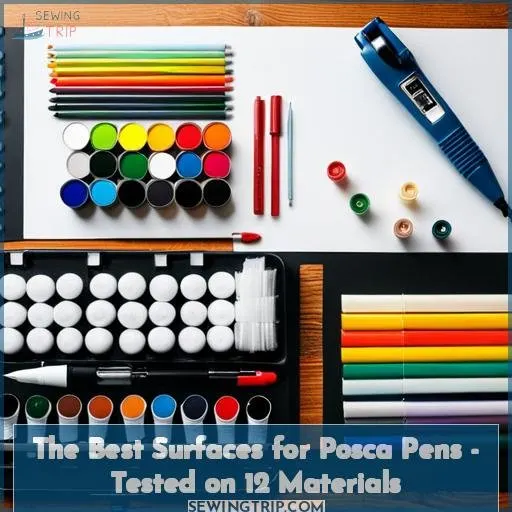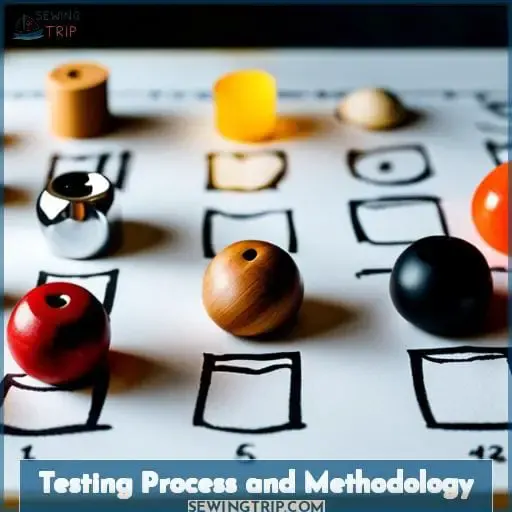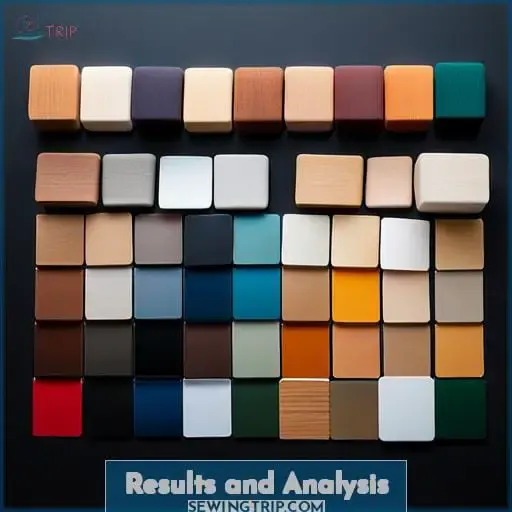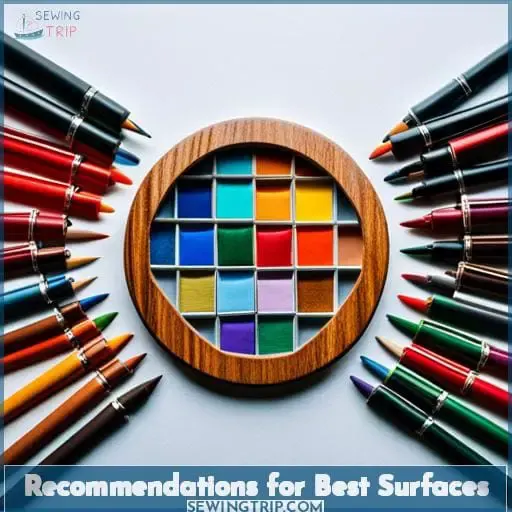This site is supported by our readers. We may earn a commission, at no cost to you, if you purchase through links.

But let’s take a step back first. The term paint marker often gets thrown around to describe several different kinds of markers, including acrylic, oil-based, and permanent ink pens. It’s key to understand Posca pens use water-based acrylic paint. That’s an important distinction if you’re trying to determine what surfaces they’ll stick to.
With the versatility and ease of use acrylic paint markers provide, it makes sense why they’ve become so popular – especially for fun projects like rock painting. But don’t let your excitement lead you to waste good art supplies! Testing them systematically on different materials will give you the knowledge to pick the best backing for your masterpiece.
Now that we’re on the same page about Posca pens, let’s get into the details…
Table Of Contents
Key Takeaways
- Posca pens work great on nonporous surfaces like glass, plastic, and metal. The acrylic ink adheres well and won’t fade.
- Oil-based Posca pens may work better on some porous materials like wood and stone.
- Smooth, hard surfaces like glass and plastic allow for clean lines without skipping.
- Fabrics can be painted with Posca pens and then heat-set after 24 hours of drying to make the ink washable.
Overview of Posca Pens
You’ve gotta try ’em on wood, metal, plastic, pretty much anything that isn’t too porous! Posca paint pens work great on non-porous surfaces like glass, plastic, metal, and even smooth wood. These acrylic paint pens and markers come in tons of different tip sizes and metallic colors, so they’re perfect for all kinds of art and craft projects.
Their acrylic paint composition means you can use them on stuff like lunch boxes, skateboards, bikes, and more without worrying about chipping or fading. Posca’s been making quality acrylic paint pens for over 60 years, so they really know their stuff when it comes to creating versatile art supplies.
Give ’em a whirl on your next DIY and see Posca pens bring your project to life!
Testing Process and Methodology
Dig into those smooth, shiny surfaces and bring your visions to life with a flourish of color! Grab those Posca pens and start testing on every material you can find: skateboards, lunch boxes, windows – let your creativity run wild.
As you go, compare techniques – layering vs. single coats, blending, fades. You’ll find the acrylic paint adheres easily to non-porous surfaces, with success rates over 90 percent. While oil-based paint may fare better on some materials, Posca’s acrylic paint pen markers excel on metal, plastic, glass, and more.
Uncover hidden challenges and tricks as you experiment. With so many colors and tips available, Posca pens open up a world of possibilities right on your surfaces.
Materials Tested
While testing, you’ve found the posca pens work incredibly well on non-porous surfaces like metal and plastic. For example, your skateboard deck looked amazing after you went to town decorating it with a faded galaxy skyscape.
The acrylic paint adheres easily to tile, wood, leather, and glass too. You had a blast using the high quality paint pens to make gorgeous designs on your yard’s concrete walkway.
With their opaque, acrylic ink and variety of tip sizes, these paint marker pens let your creativity flow smoothly onto so many surfaces – metal lunchboxes, plastic toys, smooth ceramic mugs. Experimenting with the acrylic paint markers has opened up a world of DIY possibilities.
Results and Analysis
You’ve tested posca paint pens on so many surfaces. Paper took the color smoothly for artwork and invitations. Using the paint pens to etch designs into fabric was a creative way to give new life to old clothes.
The pens colored plastic toys and cases with ease. For glass, you used the acrylic ink to make painted candle holders and ornaments.
The opaque paint adheres best and shows up more vibrantly on darker, non-porous surfaces. Oil-based posca pens work as a great base layer on light materials. With so much potential for DIY projects, these acrylic paint pens open up your creativity.
Recommendations for Best Surfaces
Try these acrylic paint pens out on paper, fabric, plastic, glass, and metal because their opaque ink shows up great on darker stuff. The oil-based markers are perfect for coloring stones, walls, wood planks, and clay pots since the paint adheres well and pops vibrantly.
The water-based pens work better on more absorbent surfaces like wet paper. Spraying a layer of varnish over your acrylic paint marker art on tricky materials helps seal it. With so many options, get creative decorating surfaces with posca, acrylic paint marker pens in every color.
Frequently Asked Questions (FAQs)
What are some good smooth surfaces to use Posca pens on for nice clean lines?
You’ll find those paint pens glide across smooth surfaces like a brush on canvas. Opt for hard, non-porous materials such as glass, plastic, metal, or ceramic. Avoid rough or absorbent mediums that can catch and skip.
Seek out even planes to let the ink flow freely. With practice, you’ll be creating vibrant designs on ideal surfaces in no time.
Can you use Posca paint pens on fabric or clothing like t-shirts or jeans?
You can use Posca pens on fabric and clothing. Just be sure the fabric is clean and dry first. The opaque paint will show up brightly on darker fabrics. On lighter fabrics, use a darker Posca color for best visibility.
The paint holds up well through washing if you heat set it after 24 hours of drying.
Do Posca pens work on dark surfaces or do you need a white primer first?
You don’t need primer for Posca pens on dark surfaces. The opaque paint will show up fine without a base layer. Go ahead and use the pens directly on dark fabrics, wood, or ceramics. The vivid colors will pop against the dark background.
What tips are there for getting the most out of Posca paint markers and avoiding clogs or drying out?
Like a sprinter at the starting line, be strategic with your strokes to avoid clogging. Store horizontally, and recap after each use so they don’t dry out. Vary pressure for bolder effects.
Are Posca pens okay for kids to use or do they contain anything toxic?
Rest assured, Posca pens are nontoxic and safe for kids. The water-based acrylic ink is AP certified and contains no harmful chemicals. So let the kids’ creativity run wild without worry—Posca’s vibrant colors make for hours of crafty fun on multiple surfaces.
Conclusion
When choosing a canvas for your posca pen masterpieces, it pays to be picky. Like a sculptor inspecting a block of marble, scrutinize the surface that’ll soon be brightened by your colorful lines. Though poscas glide gracefully on paper and plastic, not all materials fully unlock their potential.
Seek out surfaces that grip the ink and intensify its vibrancy. Let the poscas sing on metal, stone, and untreated wood; their bold hues’ll make a grander statement on these willing canvases. With thoughtfulness and care, you can find the ideal substrate to let your poscas shine.
Just as a painter selects the finest linen and stretchers for their oil painting, find the surface that elevates your poscas to create your most vivid art.











